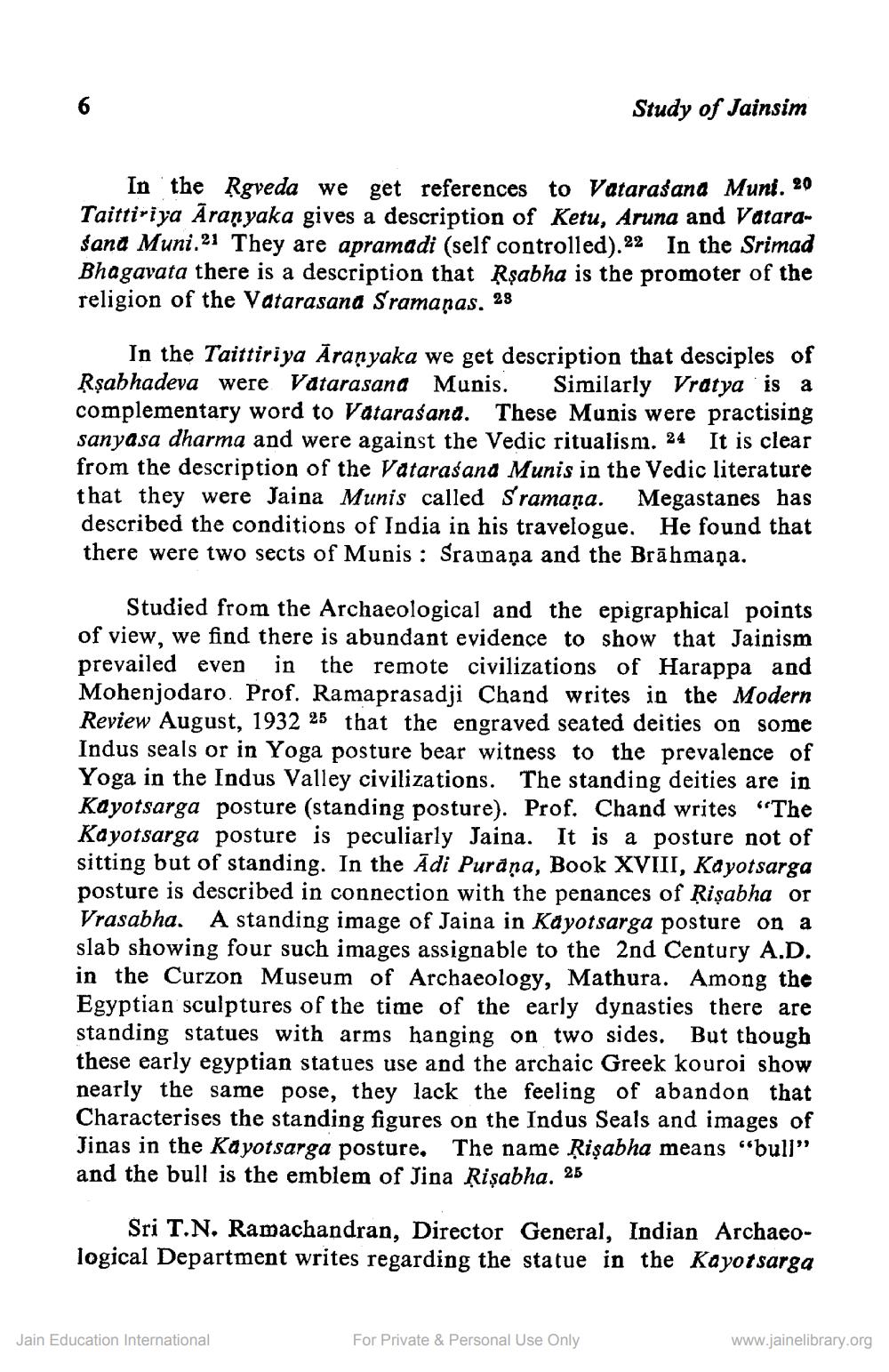________________
Study of Jainsim
In the Rgveda we get references to Vatarasand Muni. 20 Taittiriya Aranyaka gives a description of Ketu, Aruna and Vatarasand Muni.21 They are apramadi (self controlled).22 In the Srimad Bhagavata there is a description that Rşabha is the promoter of the religion of the Vatarasana Sramanas. 28
In the Taittiriya Āranyaka we get description that desciples of Rşabhadeva were Vatarasana Munis. Similarly Vratya is a complementary word to Vatarasand. These Munis were practising sanyasa dharma and were against the Vedic ritualism. 24 It is clear from the description of the Vatarasand Munis in the Vedic literature that they were Jaina Munis called Sramaņa. Megastanes has described the conditions of India in his travelogue. He found that there were two sects of Munis : Sramana and the Brāhmaṇa.
Studied from the Archaeological and the epigraphical points of view, we find there is abundant evidence to show that Jainism prevailed even in the remote civilizations of Harappa and Mohenjodaro. Prof. Ramaprasadji Chand writes in the Modern Review August, 1932 25 that the engraved seated deities on some Indus seals or in Yoga posture bear witness to the prevalence of Yoga in the Indus Valley civilizations. The standing deities are in Kayotsarga posture (standing posture). Prof. Chand writes "The Kayotsarga posture is peculiarly Jaina. It is a posture not of sitting but of standing. In the Ādi Purana, Book XVIII, Kayotsarga posture is described in connection with the penances of Rişabha or Vrasabha. A standing image of Jaina in Kayotsarga posture on a slab showing four such images assignable to the 2nd Century A.D. in the Curzon Museum of Archaeology, Mathura. Among the Egyptian sculptures of the time of the early dynasties there are standing statues with arms hanging on two sides. But though these early egyptian statues use and the archaic Greek kouroi show nearly the same pose, they lack the feeling of abandon that Characterises the standing figures on the Indus Seals and images of Jinas in the Kayotsarga posture. The name Şişabha means "bull" and the bull is the emblem of Jina Rişabha. 25
Sri T.N. Ramachandran, Director General, Indian Archaeological Department writes regarding the statue in the Kayot sarga
Jain Education International
For Private & Personal Use Only
www.jainelibrary.org




